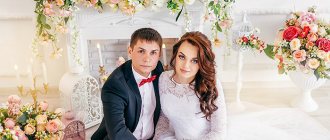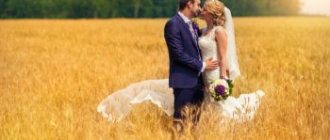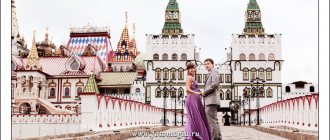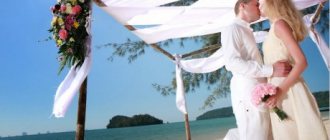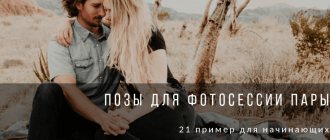Prepare the day before the shoot
I always prepare for the shoot the day before the ceremony. My preparation ritual includes:
- Preparing a shooting plan.
- Charging all batteries.
- Installing fully charged batteries in cameras and flashes.
- Preparing memory cards and formatting them.
- Inspection and cleaning of lenses and cameras.
- Packing equipment in a photo bag.
Preparing for your shoot in advance gives you plenty of time to make sure you haven't forgotten anything and that all your equipment is in working order.
Enjoy your morning
This is perhaps my most important piece of advice for any wedding photographer. If none of my advice seems useful to you, then at least listen to this. Find out where you can relax the morning of your wedding ceremony shoot. We all know that photographing a wedding can be quite stressful for a photographer, no matter how much you prepare for it.
However, if you take the time to enjoy the morning before your wedding, you will feel calmer, happier, and more balanced during your photo shoot. And a positive, calm and balanced wedding photographer is a successful wedding photographer!
I really love the morning before a wedding photo shoot because I know that during this time I won't be checking email, editing photos, or doing any other work. Instead, I can wake up later than usual, have a delicious breakfast, quietly read my favorite newspaper or magazine, in general, do whatever I want. These are a few magical hours a week when I completely disconnect from work. That's why I look forward to the morning before my wedding photo shoot.
So, the point is to find an activity that makes you calm and happy and make it your morning ritual on the day of your wedding photography.
How to prepare for wedding photography?
Of course, get some sleep. Well, at least try (and keep in mind that immediately after sleep your face is a little swollen - it returns to normal after about an hour and a half, unless, of course, there was alcohol on your menu yesterday). But there are also more personal tips.FOR THE BRIDE
| FOR THE GROOM | |
| Take care of your skin: today there are no new cosmetics, not even the usual ones! - peelings and no self-tanning. But a soothing mask in the evening will come in very handy. If you do your own makeup, choose matte textures and avoid reflective particles: what’s in the cream, what’s in the shadows, what’s on the lips, everything shiny turns into unpleasant greasy spots and highlights in the pictures. So bring plenty of matting wipes with you. | To feel that a wedding photo shoot is really important, and to get out of the “guard” pose so familiar to men (next to the bride with her arms crossed in front or behind her), you need to imagine this: that your future son is looking at you through the camera right now . Or a grandson, or even a great-grandson. And after years and time you say hello to him - and he can be proud of how handsome his dad was, how he loved his mother and how he fooled around with his friends. Let him see you like this, reckless, in love and happy. On the day when everything just begins. On the day you discover your era. |
Happy smiles and shining eyes of the newlyweds are the main decoration of wedding photos. Photo: Andrey and Irina Litvinov.
THREE IMPORTANT “DON’Ts” OF WEDDING PHOTOGRAPHY:
— 1 —
DON'T WORRY about how things are going - you are not the admins of this evening. The two of you are now performing the smooth dance of your wedding with every movement and every smile. Your loved ones or wedding professionals will take care of the rest.
— 2 —
DON'T MESS . In important moments - putting on rings, painting - make movements slowly, immerse yourself in these moments. This will give you a better feel for them and give your photographer the opportunity to capture great shots.
— 3 —
DON'T HIDE YOUR EMOTIONS! Forget about successful poses, about memorized movements, don’t work on shots - this is not your task. Live, just live, and capturing this living life in rectangular pictures is the job of your wedding photographer.
Inspiration and a little magic - this is the recipe for stunning wedding photos. Photographer: Artem Vindrievsky.
Whatever style of shooting you prefer—calibrated staging or dynamic reporting—in any case, photography conveys, first of all, the mood. And the most important thing for photographs is emotions; they cannot be drawn in Photoshop and cannot be invented later. So let your emotions show - after all, this is your wedding, the one and only!
Make a detailed action plan
Having prepared for the shoot, as described in the first tip, make a detailed plan of your actions for the day of the shoot.
For example, in such a plan I include the route and shooting locations, names and phone numbers, shooting dates, important reminders, etc. I always print out the plan in triplicate (one for myself, the second for my assistant or second photographer, the third for as a backup), and I immediately pack one into my camera bag.
Another tip: don’t forget to send an electronic version of your plan to yourself by e-mail - this will allow you to always be able to print an additional copy if you suddenly lose one of the pre-prepared ones.
In my experience, drawing up a detailed plan for the day of shooting is one of the simplest and most effective ways to organize your working time.
In addition, you can set a photo of your plan as a screensaver on your smartphone - and then you will always have it at hand.
If you use something like this to organize your time on the day of the shoot, share your experience in the comments below.
Prepare a “gentleman’s kit” for a wedding photographer
If you already have experience in photographing weddings, then you know that in order to create an aesthetic image, a photographer sometimes has to become a tailor, florist, designer, makeup artist, hairdresser, etc. Therefore, it would be useful to prepare a “gentleman’s kit” for a wedding photographer. For example, my set includes:
- Scissors.
- Threads of different colors and several needles and pins.
- Lip gloss.
- Adhesive plasters (regular and flesh-colored).
- Hairpins.
- Boutonnieres with pins.
- Thick paper towels. I use them to dry the base of bouquets - neither you nor your clients want your holiday dresses to be ruined by drops of water. And you, as a photographer, want this least of all - because otherwise you will have to remove stains from your clothes at the editing stage!
- Manicure set.
- Powder.
- Feminine hygiene items.
- Stain removers, cotton swabs and sponges.
But that is not all! I have another set that I use to take better photos of jewelry, shoes, items, people, etc. It includes:
- Two small LED flashlights.
- Glass prism (shooting through it allows you to get very interesting effects).
- Glass convex lens (again, for shooting through it).
- Dental wax (works great if you're going to be removing wedding rings).
- A set of multi-colored paper with glitter (large glitter allows you to get excellent bokeh).
- Various shiny and reflective objects (again for brighter bokeh).
These two sets give me confidence that I can take good photos even in less than ideal locations.
Wedding group photography
One thing I've done at every wedding is try to capture everyone in one group photo. To do this, you need to create a place that rises above everyone else. A balcony or, say, a staircase is suitable for these purposes.
Shooting from above has the great advantage that you get everyone's face and can fit many people into one frame when shooting. The key is to set up your shooting location in advance, and once everyone is there, take the photos without tormenting the crowd for too long. The best way to keep everyone in their place is to have a few helpers to organize the group and keep them busy while you take photos.
Avoid injury
Taking photographs may seem like the least dangerous activity, but it is not. If you've photographed a wedding at least once in your life, you know that photographing for a whole day can very easily lead to neck pain, back pain, etc.
Although I, or any other photographer, do not have a 100% working recipe to help avoid neck and back pain, I would like to share a few tips that help me reduce the likelihood of injury during photography:
Use a wheeled bag or case as a photo bag so you don't have to carry your camera equipment on your back all day.
If you use a portable camera bag, do not carry it around with you throughout the day. Always leave your bag in a safe place whenever you can.
When carrying the camera, use a waist belt or a special photographer's carrier to reduce the strain on your neck and shoulders.
If necessary, use a special pain-relieving gel (or take a couple of ibuprofen tablets) after half the shooting time.
Don’t forget to discuss hot meals with the customer
If your contract does not contain a clause obliging the customer to provide you with hot meals, then immediately include it in the contract!
The key word here is “hot”. When I first started photographing weddings, this clause was missing from my contract; I thought that a sandwich or snacks would be enough for me. But very soon I realized that I was wrong. Therefore, I changed the text of my contract.
My contract clearly states that the customer undertakes to provide a full hot lunch (or dinner) for me and my assistant (or second photographer). Most clients understand this requirement, and for the few who find it strange, I remind them that when shooting for 8-10 hours, I walk several tens of thousands of steps with heavy photographic equipment and expend more energy than the average person in one trip to the gym. So, my body needs to replenish the burned calories, and a sandwich is not enough for this.
Don't forget to also discuss when you can eat. This is very important - you should be able to eat without rushing and without compromising the photography of the wedding ceremony.
Make sure you are adequately prepared for wedding photography
My final piece of advice is that you need to take a hard look at how prepared you are to photograph weddings. This willingness can come in many forms, so before you take on the hefty responsibility of photographing a wedding, ask yourself a few questions:
- Would you hire yourself to photograph your wedding?
- Do you have experience in photographing weddings? I always recommend photographing at least a few weddings as a second photographer before committing to shooting on your own.
- Do you have the photography equipment needed to photograph a wedding?
- Are you organized and punctual enough for wedding photography?
- Do you have the makings of a leader and a commanding voice to successfully photograph a wedding? On your wedding day, you should be the real boss!
- Are you physically fit enough to photograph a wedding? Photographing a wedding requires a lot of energy, so you need to be resilient.
What do you think of my advice?
If you have your own tips, share them in the comments. More useful information and news in our Telegram channel “Lessons and secrets of photography”.
Subscribe! Tags: Portrait photography, Wedding photography, Photo tips, Photography
About the author: spp-photo.ru
- Related Posts
- Tricks, tips and tricks for Canon DSLRs
- Practical Photographer Tip #18: How to Get Your Dog to Look at the Camera
- Top 5 simple tricks to extend the life of a memory card
« Previous entry
Wedding photography. How to simplify your life and stay original
A wedding is the culmination of a couple’s relationship, an emotional peak, a day of unbridled happiness, and it’s hard for me to understand the serious photographs from this celebration. When a person is happy, he smiles and laughs. And I try to achieve these feelings at a photo shoot. I try to take photographs that go beyond the narrow genre of wedding photography, I try to ensure that their content, light, emotions and the plot itself can live an independent life, separate from the subjects of these photographs. It may seem to a novice photographer that original, interesting photography requires excessive technical and creative complexity of the process. I intend to dispel these thoughts with examples from my experience.
Aperture: f/2.8 Shutter speed: 1/1250 ISO: 200 Focal length: 85mm Camera: Nikon D700 Lens: AF-S NIKKOR 85mm f/1.4G
Versatility and philanthropy
Entry into wedding photography is very simple, just buy a camera and call yourself a professional. However, this simplicity is deceptive. In reality, real creative wedding photography as a direction includes many genres: landscape, portrait, reportage, still life, and even macro.
A wedding is a zone of positive emotions and energy, in which it is contraindicated to be in a state of negativity. I love people, I love watching them. There are few professions in the world that allow you to enter another family and spend the whole day in it. But I assure you, more than 90% of photographers do not use this opportunity! I often see them standing on the sidelines. They take a couple of shots and leave. But you need to live inside the events that happen at the wedding, immerse yourself in them, live this day together with the newlyweds and their guests.
Aperture: f/1.6 Shutter speed: 1/125 ISO: 1600 Focal length: 85mm Camera: Nikon D700 Lens: AF-S NIKKOR 85mm f/1.4G
Reliable multifunctional technology
I have cameras Nikon D810, two D750, top-end D4s. So, I shoot weddings with only two D750s. I don’t use the heavy D4S, because carrying a big “brick” from morning to evening is tiring. However, there was a time when I shot with two Nikon D4s, but that’s in the past.
But the Nikon D750, in my opinion, is the optimal camera in terms of price and quality ratio. It has an amazing picture with an unusually high dynamic range. The conditions during wedding photography are difficult: the bride’s white dress, the groom’s dark suit, bright sunlight during the day - you need all the details to be present in both the highlights and the shadows. Just a few years ago, all this was a difficult task for digital photographic equipment. In the new generation of Nikon cameras, this problem is completely resolved.
A big bonus is the D750's flip-out screen. Shooting from the point of view of human growth is not always interesting; you want different angles. And with a flip-up screen, you no longer have to lie in the dirt and dust to get a shot from ground level.
Aperture: f/4.0 Shutter speed: 1/320 ISO: 1250 Focal length: 28mm Camera: Nikon D4s Lens: AF-S NIKKOR 24-70mm f/2.8G ED
Protect yourself from an irreparable mistake
In general, two cameras are a necessary condition for a wedding photographer. This applies to any event shooting, which cannot be repeated. No one will hold a wedding twice if you only have one camera and something happened to it. A few years ago I photographed a wedding in Sicily. An ancient Italian town, in the middle of the square there is a couple standing, around there are guests who specially flew in from Russia for the celebration. I run around, photographing the newlyweds from all possible angles. I lift the camera and see that my shutter is breaking (by the way, this was a short period when I was shooting with a camera from another manufacturer). I simply transferred the lens to another camera and continued shooting. Imagine if I didn’t have a spare one... I probably wouldn’t be able to wash away this shame until the end of my days. What excuse can there be in this case?! In addition, the process of shooting with two cameras, when no time is wasted on changing lenses, noticeably speeds up.
As for the choice of optics, it all depends on the size of the wedding. If it's a grand event with a lot of guests, where you need to move around a lot, I shoot with zooms: NIKKOR 24-70mm and 70-200mm. Sometimes 85mm f/1.4. If the wedding is intimate, which most often happens to me (this is when only the newlyweds and their friends are present - a very fashionable trend for weddings without serious material costs), here I work only with fixers. Of course, lenses with a fixed focal length produce an interesting picture. But this is only noticeable to the photographer! Not a single client in 14 years of my filming has said: “Oh, so you shot this with a zoom, but this one with a prime lens!” A good picture pays for everything, no matter how it was shot.
Aperture: f/8.0 Shutter speed: 1/250 ISO: 100 Focal length: 24mm Camera: Nikon D750 Lens: AF-S NIKKOR 24-70mm f/2.8G ED
Benefits of natural light
I really love the light from shop windows, lanterns, and streets. Here the sunlight falls on the house, reflects from the windows, walls, the windows give off glare... I love walking around the center of Moscow on a bright sunny day at any time of the year. When the sun is at its zenith (when photography textbooks advise against taking photographs), the urban atmosphere is filled with the beautiful light of reflections, reflections and highlights. The sun can only be an enemy in an open field at midday, where there are no reflective surfaces. But even then you can find a solution that is interesting in the world.
The main task of a photographer is to make the photo expressive. And there is a lot of light, which will allow you to make the frame voluminous, even on a gray gloomy day. Pay attention to natural light absorbers - arches, tree crowns, dark sides of houses... The same is true when shooting indoors, for example, in the bride's house. It is not necessary to use only light from the window; feel free to use lamps, floor lamps - anything that glows. Modern cameras allow you to take photos at high ISO. Often I shoot with ISO 10,000 units - and there is simply no noise that was visible on the computer monitor at 100% magnification on a 30x40 cm print.
You can diversify your photo shoot with artificial rain. Remember the footage from the film “And I’m Walking, Walking Around Moscow,” where a girl walks barefoot in the rain, and a guy spins around her on a bicycle? All this was filmed using fire truck sprinklers. How impressive it looked! So why can't we do this on the set of a romantic story? And to simulate rain, a bottle of water and the help of a free assistant from among the guests will be enough.
Aperture: f/8.0 Shutter speed: 1/250 ISO: 100 Focal length: 24mm Camera: Nikon D750 Lens: AF-S NIKKOR 24-70mm f/2.8G ED
Interaction with the couple
I really don’t like standard posing and learned poses. Our task is to reveal and show the relationship in a couple, and not to draw up a protocol of those gathered for a special occasion. By abandoning this cliche, I create controlled chaos on the set. The more movement and commotion, the greater the chance of catching an interesting shot. Often people do not have a wild temperament and behave modestly, even extremely modestly. To get them out of this state, you need to involve them in some kind of process, movement. Ask the guys to move: push around, standing shoulder to shoulder; dance to the music; turn away to the sides, and then, on command, turn around sharply and look at each other. Let them play a little, fool around, relax. By taking an interesting shot in the first minutes, you will win the unconditional trust of the couple.
Aperture: f/8.0 Shutter speed: 1/250 ISO: 100 Focal length: 24mm Camera: Nikon D750 Lens: AF-S NIKKOR 24-70mm f/2.8G ED
Feeling the moment
By the way, I don't recommend shooting in burst mode. Try to develop a sense of the decisive shot. What Cartier-Bresson said: we are only interested in the culmination of the action.
As soon as the first interesting shot is taken, I immediately come up and show it to the newlyweds. No matter how beautiful your portfolio is, the couple does not yet represent themselves in your photographs. For them, shots with other people are like shooting with models. For some reason, people often cannot imagine themselves as happy, light and relaxed. And in the process of this little performance, chaos, they smile and look organic - because they forget that they are on the set, they are not posing. If you can use music during a photo shoot, that’s great. Maximum movement, not a single stop, maintain the pace throughout the entire photo shoot. And don’t forget to show good shots to the newlyweds.
Aperture: f/1.8 Shutter speed: 1/1000 ISO: 640 Focal length: 85mm Camera: Nikon D700 Lens: AF-S NIKKOR 85mm f/1.4G
Various shooting locations
I try to change locations as often as possible. Because when you shoot in a park for several hours, no matter how hard you try, it’s immediately clear that the entire shooting took place in one place. And if you change locations more often, everything is different: new light, new background, boundaries are expanded and the duration in time increases significantly. And then you will get the feeling that you have been traveling with a couple for several days. Therefore, I urge you not to shoot in one place and not to repeat poses and scenes, so that the photo shoot is as varied as possible.
Don't forget about the guests
The mistake of the vast majority of wedding photographers is to try with all their might to get rid of guests at a photo shoot, take the couple for a walk and work only with them. I take everyone to a photo shoot: relatives, friends. Guests are real extras and extras who will do whatever you want for free! You can literally make them work for your idea. Ask them to do something in the frame, involve them in the game. Look for new angles - for example, shoot the company from the top.
Aperture: f/2.2 Shutter speed: 1/1000 ISO: 500 Focal length: 35mm Camera: Nikon D3s Lens: AF-S NIKKOR 35mm f/1.4G
Cost-Effective Post-Processing
Why I love Nikon - I practically stopped shooting in the NEF format, because the latest generation of cameras produces remarkable JPEG quality. I only shoot JPEG + NEF just in case there is an error in exposure. And by the way, the skin color that top Nikon cameras give does not need additional processing.
I only shoot in manual mode, because it is important for me to get a predictable result. In addition, this significantly reduces processing time: at each location, if the lighting conditions do not change, I take 10–20–50 pictures with one exposure pair, then I process only one frame, and then distribute these parameters (preset) to the rest group.
A very useful point: develop the quality of making the composition final, without plans to crop the frame during processing. Then post-processing consists only of frame selection. This frees up a huge amount of time!
The entire process of preparing the shooting takes me one day. I sit down in Lightroom in the morning, and by evening I have photographs (no more than 1000) and a preliminary layout of a photo book ready.
Aperture: f/5.6 Shutter speed: 1/500 ISO: 800 Focal length: 14mm Camera: Nikon D810 Lens: AF NIKKOR 14mm f/2.8D ED
Finding inspiration and collecting ideas
For me, cinema is an inexhaustible reservoir of ideas. Turn on the film, don’t watch the main characters, but look at what the others present in the frame are doing, how the light works, how the atmosphere is created. Watch a lot of high-quality films shot by famous cinematographers, take screenshots and collect these ideas to bring them to life on set. Moreover, you will be surprised, but I believe that a film of almost any genre can be called a wedding, since in all films there is a relationship between a man and a woman. Therefore, each of these films can give you many ideas for your photo shoots. Gaidai's comedies, for example, give wonderful ideas; they have a lot of movement and humor. It's great to watch silent films, where the emphasis is not on words, but on movement. Watch films by Charlie Chaplin, Buster Keaton, Leni Riefenstahl and more recent classics - Bernardo Bertolucci, Andrei Tarkovsky and many other authors.
Aperture: f/1.8 Shutter speed: 1/500 ISO: 1250 Focal length: 85mm Camera: Nikon D4 Lens: AF-S NIKKOR 85mm f/1.4G
Like any human quality, visual erudition can be cultivated, and the more high-quality images you absorb, the faster you will be bursting with ideas at photo shoots. And this is a prerequisite for success as a wedding photographer!
Nikon D500. New debate around DX and FX formats
Discussion: 7 comments
- Alexei:
05/03/2016 at 18:48Great article, thanks!
I have photographed friendly weddings before, but I am familiar with much of what was said in the article and agree with everything.
Regards, Alexey.
Answer
spp-photo.ru:
05/03/2016 at 19:34
Thank you for your comment! If you have anything to share from your experience, we would be grateful. We are sure this will be of interest to all readers.
Sincerely, administration of spp-photo.ru
Answer
05/03/2016 at 19:03
I think that photographing weddings is quite a difficult task. I wouldn't dare do this kind of photography. I'm more of a spectator. In the sense that I like to look at wedding photographs in a reportage style. No ostentatious posing there. Realizing how complex the reportage genre is, this also scares me away from weddings))
Answer
- Helsa:
05/04/2016 at 15:12
It’s a pity that among the many wedding photographers there are very few who self-critically and soberly assess their capabilities.
Answer
05/03/2016 at 23:36
There will be a wedding shoot on May 21st. I really want to take dynamic pictures. That is, so that the bride and groom in the photo are in motion, and not standing this way and that, as if for a passport.
I am glad that the couple is young and have already shown their ideas. Judging by what they saw, they need to pose not in wedding clothes, but in a robe, so that they are comfortable and so as not to get dirty in case of possible falls while posing
